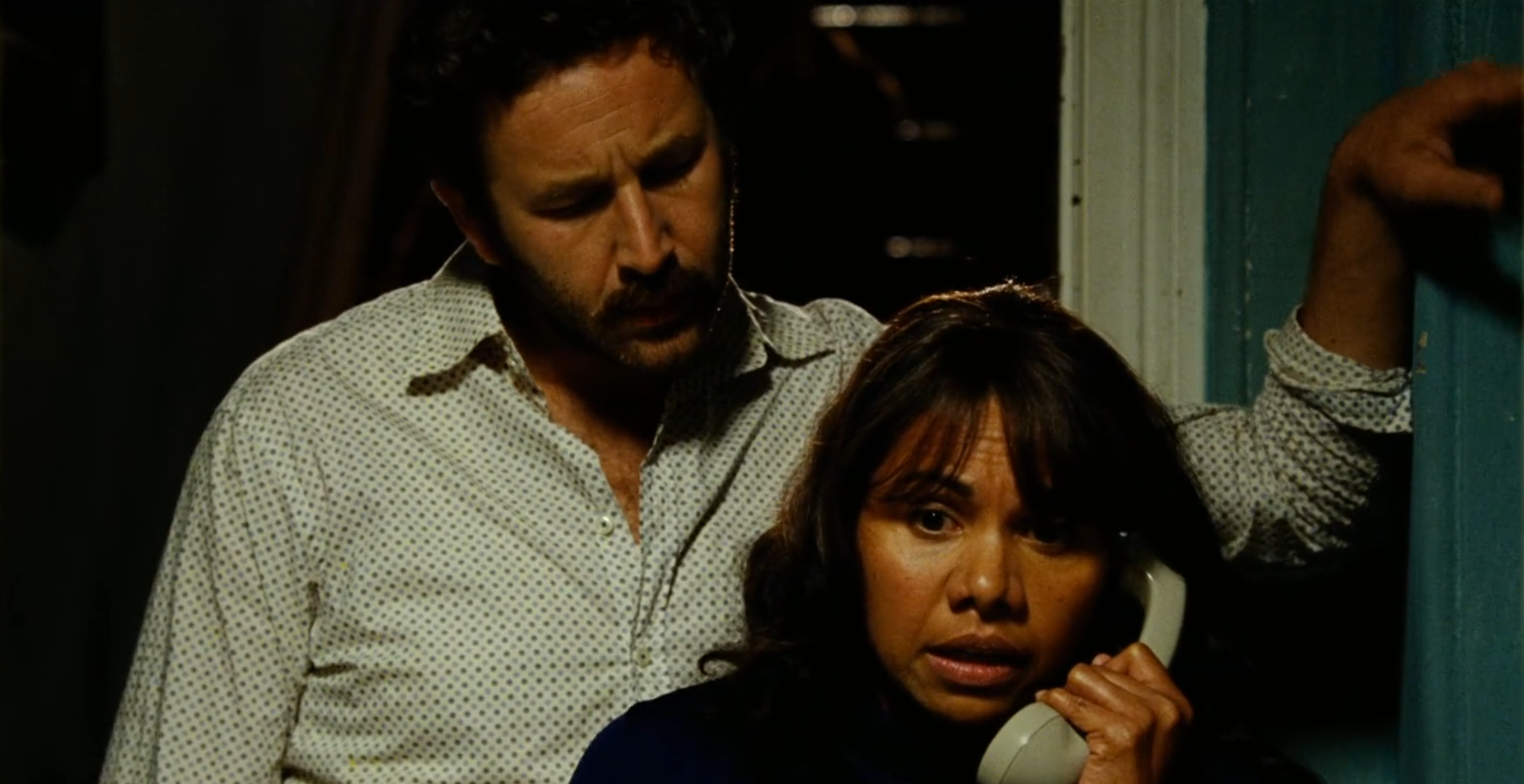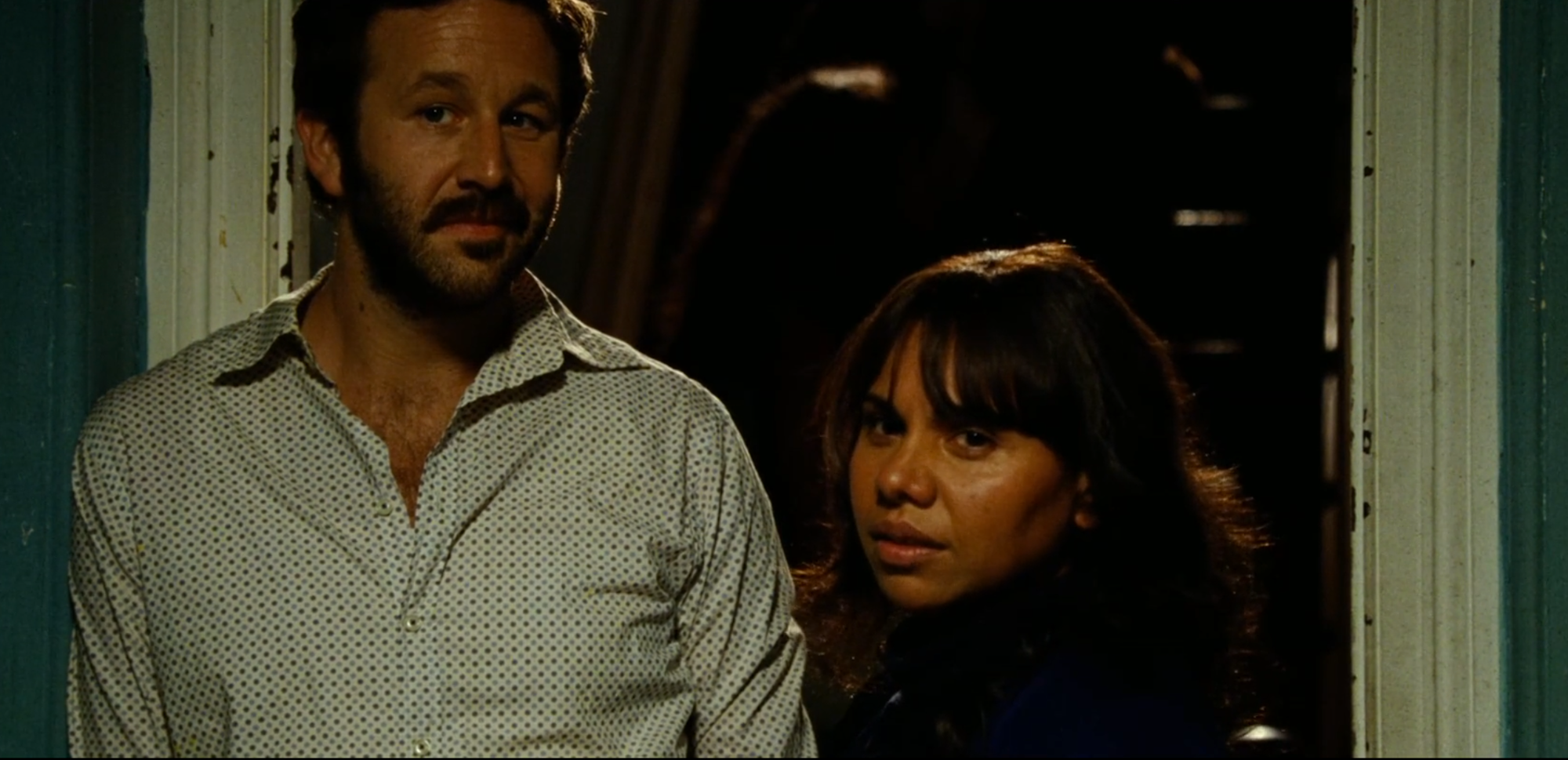Sometimes the easiest way to link two characters together is to simply have them stand next to each other as much as possible. In other words, blocking. This is especially true in scenes with multiple characters in a group.
In a previous post in this series, I defined secrets as “intellectually separating two characters from everyone else.” The same is true with blocking, except in this case, we’re talking physical location.
This seems like a no brainer (like many of the posts in this series), but this is one of those details that is easily overlooked. In writing, every single word and action must do double or triple duty. Every word communicates something to the reader, so you have to pay attention to what you’re communicating, even down to little things like where a person is standing in a group.
The movie that made me think of this was The Sapphires. (Yes, I watched this movie solely to see more of Chris O’Dowd, and I was not disappointed.)
Spoiler warning. But honestly, this movie came out in 2012. If you haven’t seen it yet, then you’re probably not going to.
Who’s it gonna be?
I am fairly good at immediately picking out which two characters will get the romance subplot in any ensemble movie or tv show. Usually it’s the musical cues that do it. A girl sees a cute boy walking across the high school cafeteria, and thanks to the romantic melody underlying the scene, there is no question that this is the love story. Neither character has had any interaction whatsoever. They don’t know anything about each other. But we all know what’s coming.
The Sapphires didn’t do this. In fact, the romance subplot didn’t even begin until nearly halfway through the movie, even though the relevant characters met in the first 10 minutes.
You want to know when I pegged Dave and Gail as the lovers in this story? Pick your favorite:
There was no hint of a relationship between them. No longing looks, no real interest. In fact, they barely get along at all, though they have good chemistry. Gail is very hard headed and stubborn, and Dave doesn’t mince words when telling her she’s not good enough to sing lead. Gail is mostly concerned with her fellow singers, and when she does talk to Dave, it’s all business and scolding.
All of the moments pictured above (plus a few I didn’t bother to grab) happen in the first half hour of the movie, but the first hint of a romantic inclination doesn’t happen until the one hour mark. That’s when they have a revealing conversation by the river and Dave asks her to dance.

But the director blocked these two characters this way intentionally. Even though there was no hint of a closer relationship in the script yet, they needed to prime the audience for it subconsciously. That way, when they do start to look at each other differently, it doesn’t come out of left field.
A Court of Thorns and Roses
Though blocking can be much more obvious in movies, it is important in books as well. Take this popular series by Sarah J. Maas. (Major spoilers! Stop now if you haven’t read book one at least.)
The romance between Feyre and Tamlin during book one is fantastic. The reader is supposed to ship these two, and it works.
But toward the end of book one, Tamlin gets taken out of the picture. Feyre starts getting more and more association with another character, Rhysand. She is basically given to him, spends parties with him, and owes much of her success to him.
During parties and events, Tamlin sits next to the villain of the story. Feyre sits next to Rhysand. Despite the success of the romance between Feyre and Tamlin in book one, by the end, I knew for a fact her true love story lay elsewhere.
Without that intentional blocking, the reader would not have wanted or expected a relationship to grow between Feyre and Rhysand later in the series. Of course there were other hints as well, secrets and touching among them, but this blocking was a significant factor.





